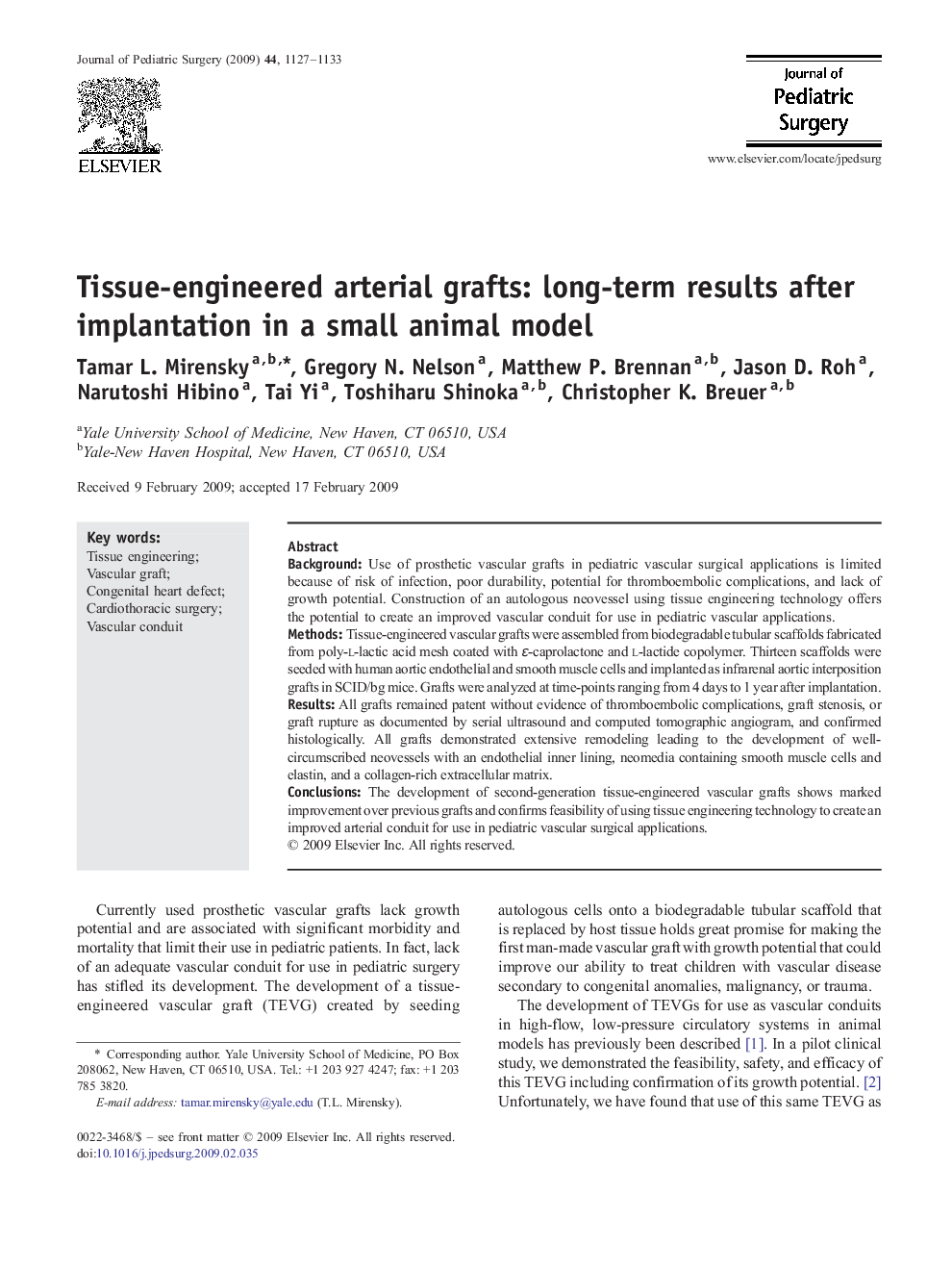| Article ID | Journal | Published Year | Pages | File Type |
|---|---|---|---|---|
| 4159476 | Journal of Pediatric Surgery | 2009 | 7 Pages |
BackgroundUse of prosthetic vascular grafts in pediatric vascular surgical applications is limited because of risk of infection, poor durability, potential for thromboembolic complications, and lack of growth potential. Construction of an autologous neovessel using tissue engineering technology offers the potential to create an improved vascular conduit for use in pediatric vascular applications.MethodsTissue-engineered vascular grafts were assembled from biodegradable tubular scaffolds fabricated from poly-l-lactic acid mesh coated with ɛ-caprolactone and l-lactide copolymer. Thirteen scaffolds were seeded with human aortic endothelial and smooth muscle cells and implanted as infrarenal aortic interposition grafts in SCID/bg mice. Grafts were analyzed at time-points ranging from 4 days to 1 year after implantation.ResultsAll grafts remained patent without evidence of thromboembolic complications, graft stenosis, or graft rupture as documented by serial ultrasound and computed tomographic angiogram, and confirmed histologically. All grafts demonstrated extensive remodeling leading to the development of well-circumscribed neovessels with an endothelial inner lining, neomedia containing smooth muscle cells and elastin, and a collagen-rich extracellular matrix.ConclusionsThe development of second-generation tissue-engineered vascular grafts shows marked improvement over previous grafts and confirms feasibility of using tissue engineering technology to create an improved arterial conduit for use in pediatric vascular surgical applications.
